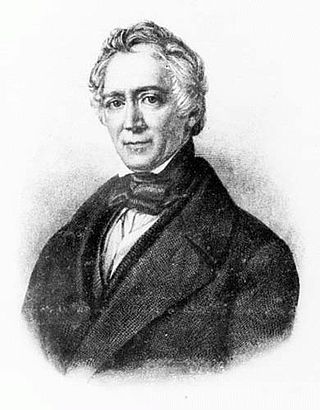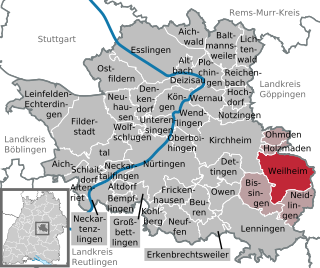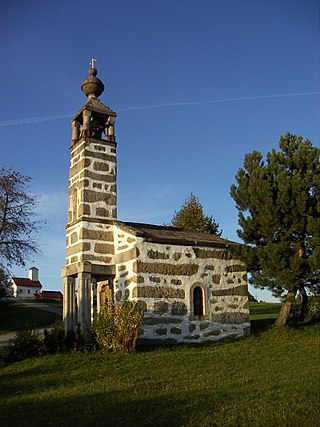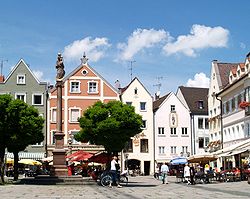
Friedrich Ludwig Georg von Raumer was a German historian. He was the first scientific historian to popularise history in German. He travelled extensively and served in German legislative bodies.

Himmelpforten is a municipality west of Hamburg (Germany) in the district of Stade in Lower Saxony. It is located on the Horsterbeck creek. Himmelpforten is also part and the seat of the Samtgemeinde Oldendorf-Himmelpforten.

Schongau is a town in Bavaria, near the Alps. It is located along the Lech, between Landsberg am Lech and Füssen. It has about 12,000 inhabitants. Schongau has a well-preserved old wall around the center.

Lüchow (Wendland) is a city in northeastern Lower Saxony, in Germany. It is the seat of the Samtgemeinde Lüchow (Wendland), and is the capital of the district Lüchow-Dannenberg. Situated approximately 13 km north of Salzwedel, Lüchow is located on the German Framework Road. In the Polabian language, Lüchow is called Ljauchüw.

Peißenberg is a municipality in the Weilheim-Schongau district, in Bavaria, Germany. It is situated 7 km southwest of Weilheim in Oberbayern.

Weilheim an der Teck is a town in the district of Esslingen in Baden-Württemberg in southern Germany. It is situated 7 km southeast of Kirchheim unter Teck, and 13 km southwest of Göppingen. Locals often refer to it as just "Weilheim", although there are in fact several "Weilheims" in Germany including one other in Baden-Württemberg.

Wessobrunn is a municipality in the district of Weilheim-Schongau in Bavaria in Germany.

Hohenpeißenberg is a municipality in the Weilheim-Schongau district, in Bavaria, Germany. Hohenpeißenberg is situated in the Bavarian Oberland, in the Alpine Foreland.

Weiding is a municipality in the district of Schwandorf in Bavaria, Germany.

Weitersfelden is a municipality in the district of Freistadt in the Mühlviertel in the Austrian state of Upper Austria.
Hartmut Boockmann was a German historian, specializing in medieval history.

Hans Albert Alexander Louis Carl Stuhlmacher (1892–1962) was a German pedagogue, Wehrmacht officer and local historian.

The Bundesstraße 23 is a German federal highway in Bavaria that runs about 59.2 kilometres, from Peiting to the Austrian border near Garmisch-Partenkirchen. This highway (partially), along with the Bundesstraße 17 and Bundesstraße 472 highways, constitute the “German Alpine Road”. Coupled with the Bundesstraße 2 highway, it passes through cities such as Mittenwald, Innsbruck and the Brenner Pass.

Weilheim (Oberbay) station is the station of the Bavarian district town of Weilheim in Oberbayern. It is a crossing station on the Munich–Garmisch-Partenkirchen railway, the Ammersee Railway from Mering and the Weilheim–Peißenberg railway. It is classified by Deutsche Bahn as a category 4 station and has five platform tracks. It is served by about 100 trains daily operated by Deutsche Bahn and Bayerische Regiobahn (BRB).

Michael Matheus is a German historian.
Himmelpforten Convent was founded as a monastery of nuns following the Cistercian Rule during the 13th century in Himmelpforten, in today's Lower Saxony, Germany. During the 16th century, it was converted into use as a Lutheran Damsels' Convent. The Himmelpforten Convent was founded before 1255 and finally dissolved in 1647. The convent complex was built between 1300 and 1330. After 1645 the buildings, including the abbey, increasingly decayed, until they were little by little demolished. The dilapidated abbey was demolished in 1737 and replaced by today's St. Mary's Church which partially covers the foundations of the former abbey.
Ottogerd Ludwig Wilhelm Mühlmann was a German academic, art historian, notable for his work in historical preservation.

Vincenz Statz was a Neo-Gothic German architect, mainly active in the Rhineland.
The Brabant Road, Cologne to Leipzig Road or Liege Road is an ancient road which, during the Middle Ages and Early Modern Period, was one of the most important continental east-west oriented military and trade routes. It ran from the eponymous Duchy of Brabant to Leipzig.
Hans Michael Finger was a German teacher and head of the district home office in Peine.





















